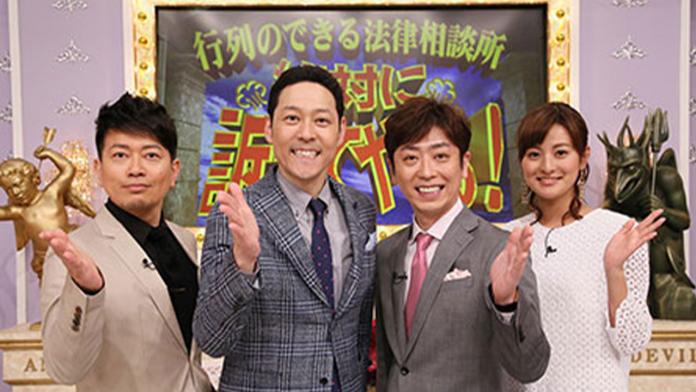What comes to mind when you think about Japanese variety shows? They’re wild, off-the-wall, and hilarious to watch. Many think about their wild, unique nature. And while they come in many forms, they all consist of many challenges, including but not limited to: original stunts, musical performances, comedy skits, quiz contests, and endurance challenges.
The primary marketing pull for variety shows amongst Japanese audiences is the absurd content, which is purposely made to be weird, and the extremely fast pace contestants must compete within. The shows are primarily scheduled during prime-time television for a reason. They have a big draw. One such factor for their popularity is their all-star guest lists. These feature a variety of hosts and contestants, including celebrities from Japan and abroad, comedians, J-pop Idols, and famous officials.
But let’s back up a little.
TV got off the ground in Japan in the early 1930s using a domestic TV system. The early innovations in the industry were a bit rocky, though, due to the start of World War II. So, the first full-fledged TV broadcast experiments lasted only a few months. Regular television broadcasts only came to the Japanese islands in the 1950s, several years after the war. Appearing onto the scene early on, Japanese variety shows have been around since the dawn of commercial Japanese TV, and they are numerous in style and substance.
Watching people make fools of themselves was extremely entertaining to audiences at the time, and that hasn’t changed one bit. Their popularity only grew. And to think it all started with a basic game show that was arguably the first variety show to hit Japanese television. The show was called Gesture and was a game broadly similar to charades.
Shōten
As we’ve already established, variety shows have been around in Japan for a long time. One of the shows that has been around forever is Shōten, a Japanese TV comedy program that has been continuously broadcast every Sunday evening on Nippon TV since May 15, 1966. This makes it the second-longest-running variety TV show in the history of Japan.
The show is based on a form of traditional Japanese storytelling, where a host—currently Shunpūtei Shōta—poses questions to a panel of six guests who must produce a funny or witty response. The rules are simple: in every 15-minute contest, the host poses three questions to the guests. Each question can be answered an unlimited number of times by any member, and the custom is that everyone must answer each question at least once. Should a member wish to answer a question and the resultant answer be funny or witty, the member will receive one or more floor cushions—extra cushions if the host and audience enjoy it.
Currently, the floor cushions for this game are brought by Takao Yamada, formerly a successful pop star in the 70s idol group Zūtorubi, but now an object of ridicule in his red kimono. However, if a member’s answer falls flat, being either distasteful or insulting to fellow members, that member will lose one or more cushions, or zabuton. On some extreme occasions, the host may confiscate everyone’s zabuton if he deems that all the members have conspired to humiliate him. This phenomenon is often referred to as an “Utamaru genocide.” The first time this happened was in 2006, after San’yūtei Enraku VI, with other members, compared the elderly host to a “talking corpse.”
Should an ogiri member acquire 10 cushions, they win that day’s special prize. It is usually very rare for anyone to actually achieve the 10 to win.
Downtown no Gaki no Tsukai ya Arahende!!
Another long-running variety show is Downtown no Gaki no Tsukai ya Arahende!!, literally translated to “Downtown’s We Aren’t Errand Boys!” This is a variety show hosted by popular Japanese comedian Hōsei Tsukitei, with fellow comedian Masatoshi Hamada co-hosting. Together, they are the duo known as “Downtown.” The program has been broadcast on the Nippon TV channel since its pilot episode all the way back on October 3, 1989, and continues to this day. The series even celebrated its 1000th episode back on April 18, 2010.
With the 1000+ episodes in the show’s history, the Downtown duo has done just about every mini-game and challenge under the sun. Challenges include 100m sprints, games where contestants cannot laugh, eating tuna, bowling, etc. A famous scene is where a male contestant fails to say a tongue-twister and gets hit in the crotch by a spring-loaded pole, literally translating to “the penis machine.”
An important aspect of Downtown’s comedy is their willingness to make themselves the butt of the joke in the show. While many comedians rise above being ridiculed, Downtown has always taken ridiculous roles in shows, even after becoming popular. This is particularly evident in Gaki No Tsukai, where they endure countless physical and mental punishments, such as their “punishment games.” Usually, these roles would be reserved for younger, less popular comedians, but Matsumoto and Hamada relish in these roles even after becoming part of the elite of Japanese entertainment.
Although they are legendary together, the two find it extremely awkward and uncomfortable being left alone together in a room. As was showcased during the “500 questions for Hamada Masatoshi,” segment Matsumoto won the challenge and sat there in awkward silence as Hamada offered him a drink.
Prize Contest life
Another incredible Japanese variety show has deconstructed the very idea of winning game show prizes. A show called Susunu! Denpa Shonen, which ran from 1998 to 2002, most famously had a game segment called “Prize Contest Life,” starring a man named Nasubi.
“Prize Contest Life” starred Fukushima-born comedian Nasubi, or “eggplant,” after his “long-shaped head.” He had been selected from many amateur comedians looking for a way to break into national television. Nasubi had been picked at random from a room of contestants and was immediately stuffed into a car and blindfolded. When the blindfold came off, Nasubi had been placed into a small room and was ordered by a producer to take all his clothes off and give them to him. Lastly, Nasubi was told by the producer what the show’s premise was: “Can a man live on winning sweepstakes alone?” and the door was shut and Nasubi was alone.
Every day, Nasubi would wake up and tell the camera what day it was. He would then spend the whole day writing to a magazine in order to win $10,000 worth of prizes. Some days, Nasubi would win bags of rice, which were impossible to cook because the apartment had a stove but no kitchenware. One day, he won a bicycle, but being naked and trapped in a bare apartment made it useless. Another day, he won a Playstation with a copy of the train simulator Densha de Go!, which he played for three uninterrupted days straight. After 15 months, Nasubi finally won enough to escape. He then went on to become a minor celebrity, most notably playing Watcherman in Kamen Rider W.
Japanese game shows are known overseas for their brutal challenges. In 2008, The Hollywood Reporter said that “the Japanese have elevated cruelty to an art form.” In 2002, it was acknowledged in The Washington Post that these game show challenges had caused physical injuries to some contestants. Some of these game show injuries were as severe as spinal injuries, but clearly, the risk of injury was not enough to shut down these shows.
While we only got to talk about three variety shows, there are hundreds more of all different wacky and inconceivable themes. Be sure to check them out if you get the chance! Variety shows are indisputably Japanese to their core—a staple of television and the first thought of many when someone mentions the topic of Japanese TV shows.
What do you think of Japanese variety shows? Let us know in the comments below or on Twitter!



